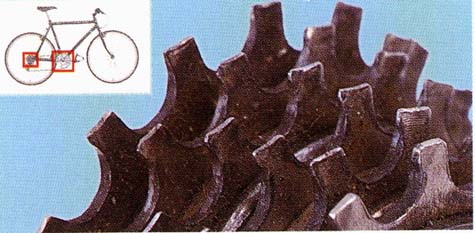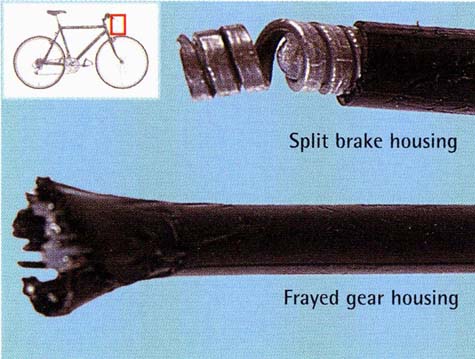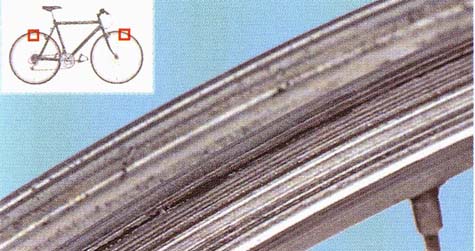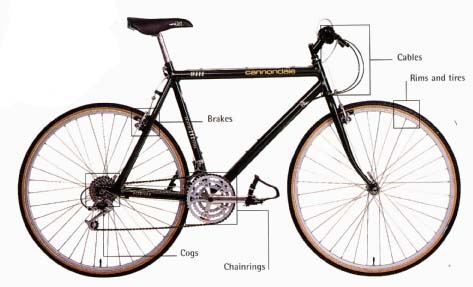
The more you ride your bike, the quicker the various
moving parts, particularly tires and brake pads, will wear away. Replacing
the parts as soon as they become worn not only keeps the bike running
smoothly but also reduces the chances of an accident. You will save money,
too, since worn parts have the effect of wearing out other parts.
As you run through your safety checks, look for worn teeth on cogs and chain rings, worn brake pads, split or frayed cables, worn wheel rims, bulging or split tires, and worn tire treads. If you spot any danger signs, take action as soon as you can. You must replace a damaged part before you next ride your bike.
Checking for danger
Regularly check the tires, rims, brakes, chainrings, cables, and cogs so that you can spot signs of wear as early as possible.
Cogs and chainrings
Regularly check for worn or missing teeth on a chainring or cog. The chain can jump when you apply pressure to the pedals, especially if you are out of the saddle, and you may be pitched forward and crash. Replace the chainring or cog as soon as you see this sign.
Brakes
Worn brake pads
Regularly check all the brake pads for uneven wear. This is a sign that they are not contacting the braking surface evenly. The effectiveness of your brakes is compromised because not all the pad’s surface is in use. Install new pads and adjust your brakes correctly.
Cables
Check all cables and cable housings for signs of splitting and fraying. Frayed inner cables can snap, leaving you without gears, which is inconvenient, or without brakes, which is dangerous. Change the cable before you ride again. Worn or split housings reduce the effectiveness of your brakes and allow dirt to get in and clog the cables. Change the housing as soon as you can.
Rims and tires
Look for evidence of deep scoring on the rims of each of your bike’s wheels. Rim brakes will gradually wear out the rims, especially if you ride off-road or in winter. Eventually, the rims will fail and you could crash. Cracks around the nipples of the spokes where they join the rim are a danger sign, too. Replace the rim if you see these signs.

Bulging tire
Check the whole circumference of both tires for bulges in the tread or the walls. Tires with bulges or distortions are very likely to blow out if you ride on them. If you see any of these signs, replace the tire.

Split tire
Check each tire for splits or cuts in the tread or side walls. A large split means that the internal fabric of the tire is damaged, so the tire is likely to blow out. Smaller splits and cuts will let sharp objects penetrate the tire, causing at least a puncture and possibly a rapid blowout. Replace the tire if you see any splits or cuts.
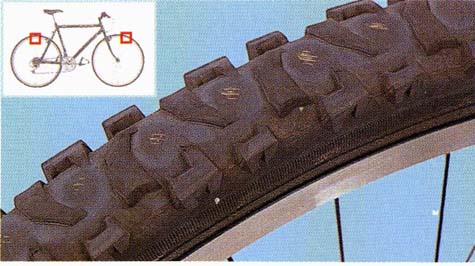
Worn tread
Look closely at the tread of both tires for signs of wear. If the tread is worn, the tire has lost structural strength and can break down and distort or bulge. The result can be a blowout during the course of a single ride. A tire that has been skidded and lost enough rubber to develop a flat spot can also be dangerous. Replace the tire if you see either sign.
